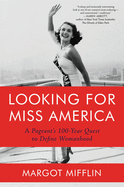
The women's movement has always had a problem with the Miss America pageant, but Looking for Miss America makes clear that second-wave feminism owes a debt to the annual competition. During the sensation-causing feminist protest at the 1968 pageant, a bedsheet emblazoned with the words "WOMEN'S LIBERATION" got the press to introduce the phrase into the national lexicon.
Margot Mifflin (Bodies of Subversion) proves herself an intrepid scholar of this institution. The Miss America pageant grew out of the beauty contest held at Atlantic City's Fall Frolic of 1920. It began offering scholarship money to winners in 1945--a signal that the competition was to be viewed as more than a skin show. In the 1950s, the overseers finally nixed the grotesque Rule Seven, which said that contestants had to be "in good health and of the white race." This wasn't high-mindedness at work: Mifflin shows that existential threats are typically the motivating force when the pageant updates its rules, as when, after literally decades of debate, it finally phased out the swimsuit portion of the competition in 2018.
But one regulation remains enshrined: the requirement that contestants not be married, divorced or widowed--in other words, they must be perceived as virgins. Writes Mifflin, "It was as American as apple pie: cranking up interest in female sexuality while punishing women who acted on it."
Looking for Miss America is, in the language of pageantry, lavish in its research, and its prose is sparkling. It is a riveting, multivalent history. About this, if nothing else, most feminists and pageant enthusiasts will agree. --Nell Beram, author and freelance writer

